Continuing the visit to CERN. This second and last part is about the permanent exhibition of Microcosm and the guided tour.
Visit to CERN (Part 1)Click here
Microcosm entry
Right at entrance, there is a corridor which tells the formation of Universe, from Big Bang to present.
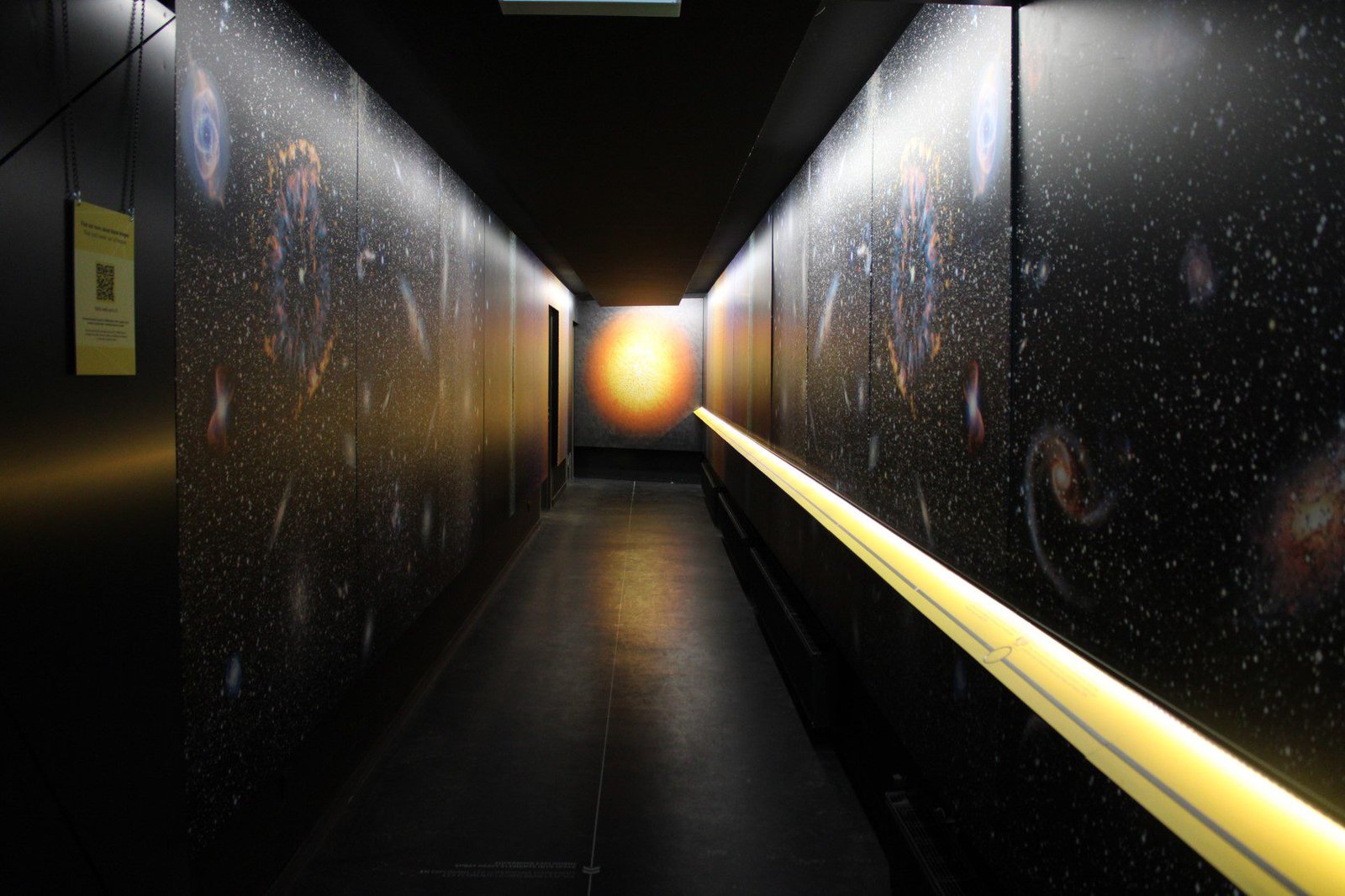
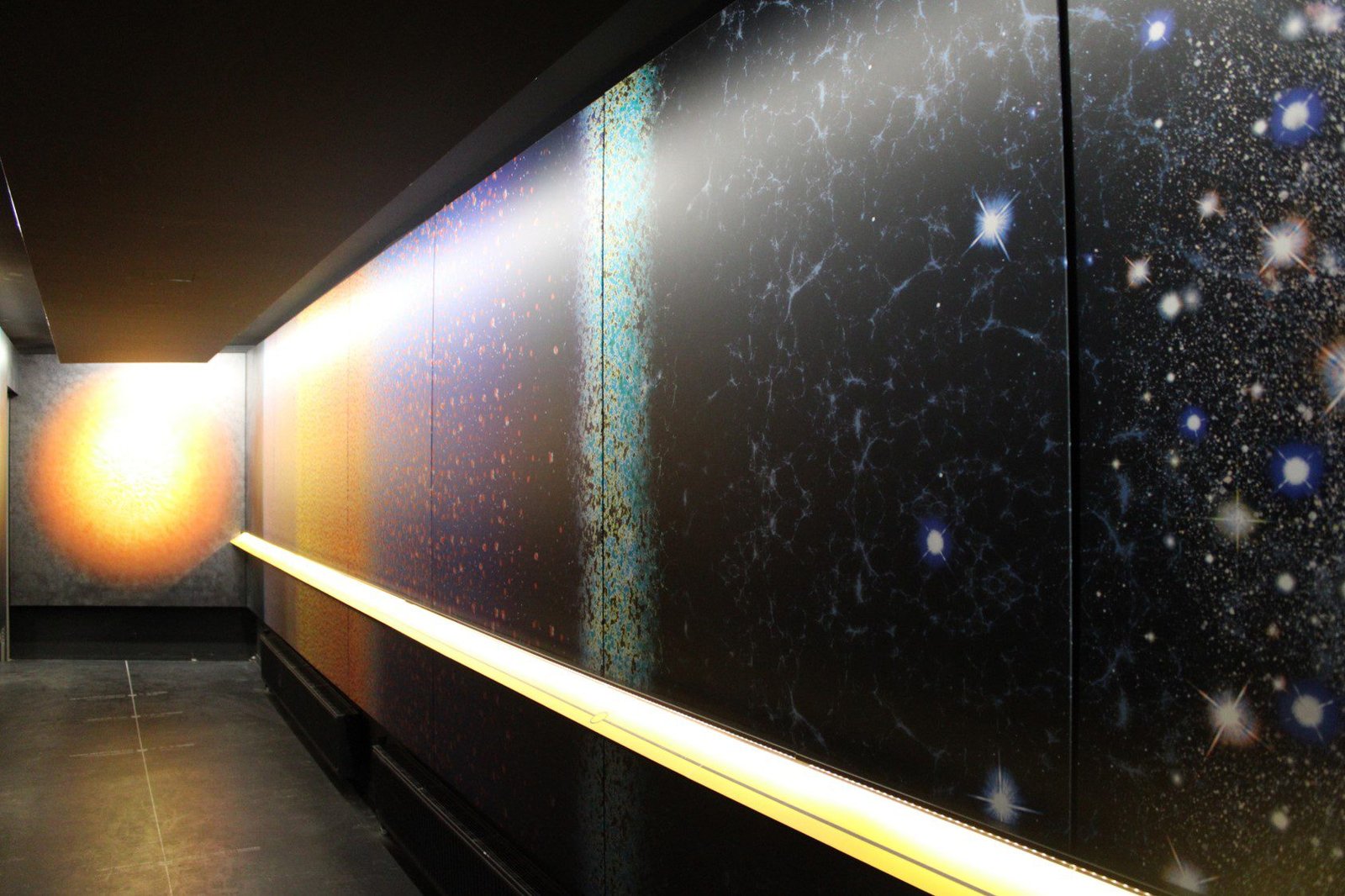
First room
This is Microcosm’s first room.


Before goes to LHC, proton enters in smaller accelerators. LINAC1, whose model is shown below, was used from 1958 to 1992. Actually, CERN uses LINAC3 and LINAC4.
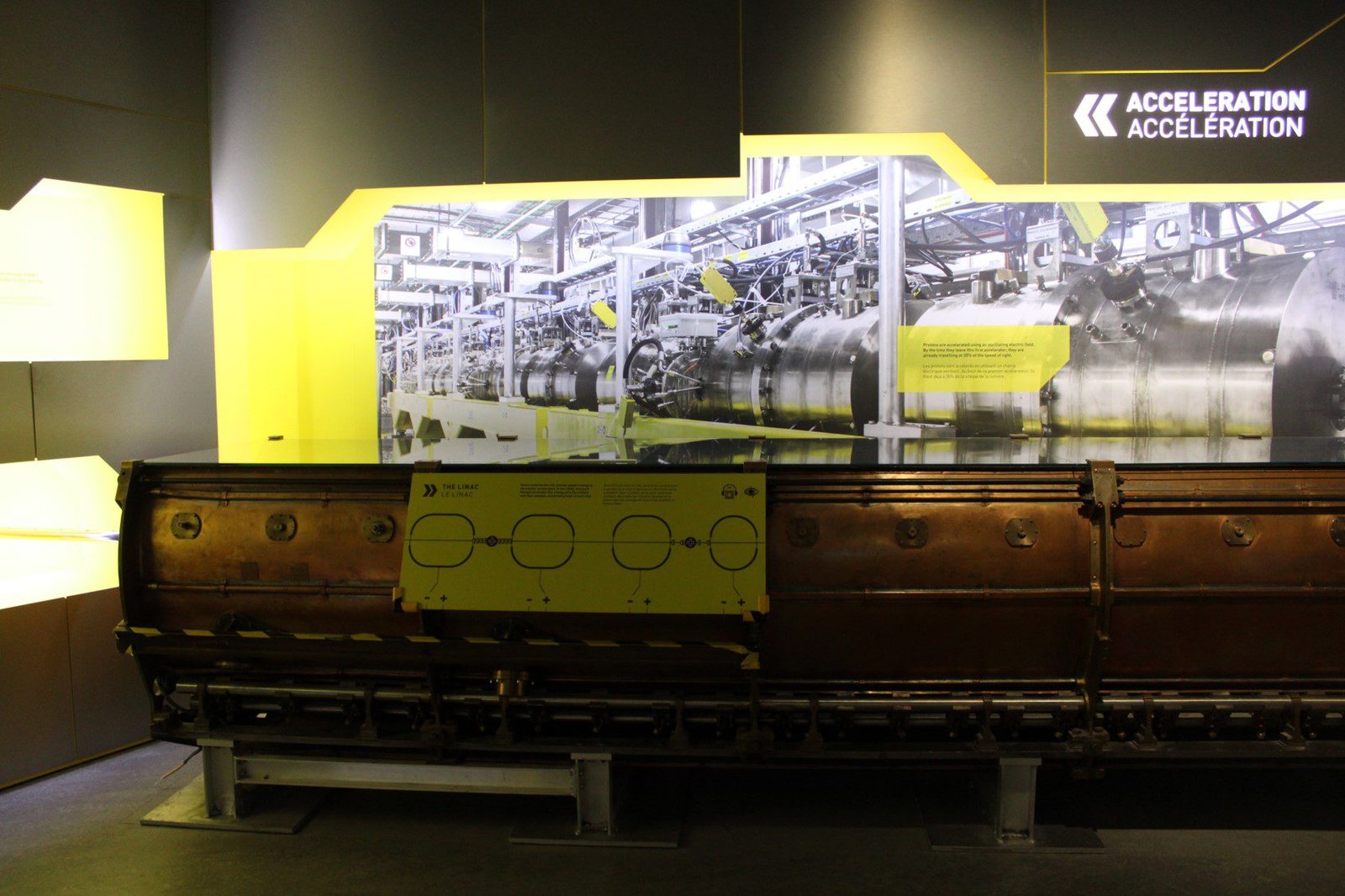
A hydrogen tank provides atoms. The device on left is called Duoplasmatron and remove electrons.

LINAC is a linear proton accelerator, each one of these cavities is a pair of electrodes supplied by alternate current, creating a oscillating electric field in radio frequency.

Red lights appear between cavities representing protons. When left LINAC, the proton already has 30% of light speed.
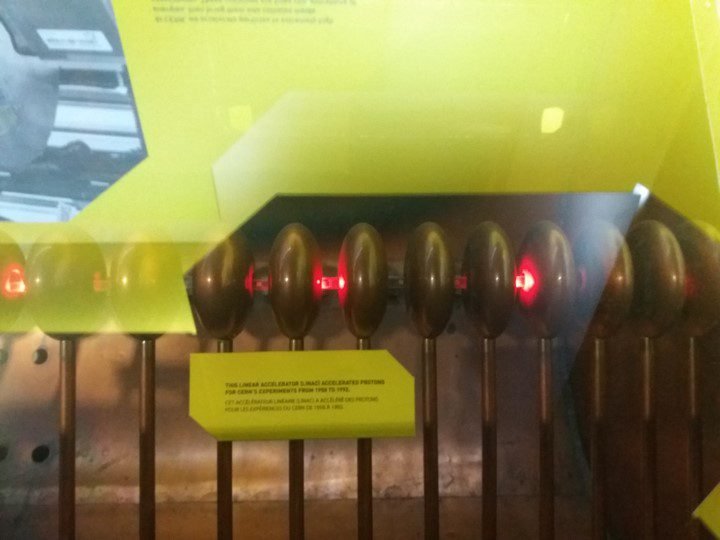
Before enters LHC, proton beam pass through a network of smaller accelerators, like SPS (smaller circle), gaining energy each turn to finally enters in LHC to collide with other protons, producing many subatomic particles.

This touchscreen explain many physics concepts.
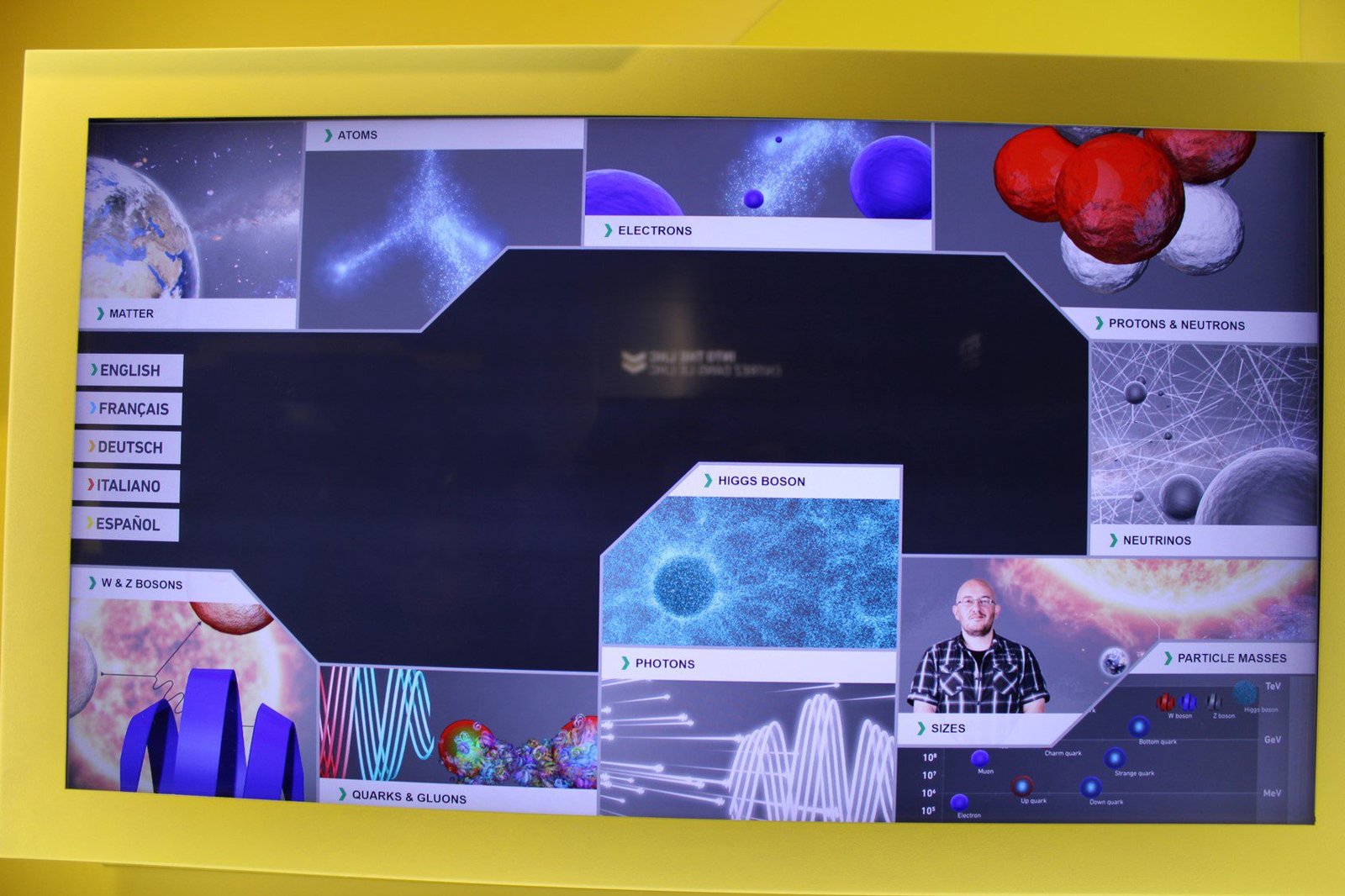
This is a cloud chamber, or Wilson chamber. These traces aren’t a simulation, are left by real particles from space, called cosmic rays. Many of these particles pass through our bodies all the time, no matter where we are. Radiation sources also left traces in cloud chamber.

LHC tube
Showing parts of inside the LHC tube.

- Liquid helium: Superconductors electromagnets need to be cooled at 1.9 Kelvin (-271.25ºC/-456.25ºF). 800,000 liters of liquid helium cool down 36,000 tons of equipment. It’s transported by tubes indicated above.
- Support post: Support the magnets, are made of epoxy-fibre-4 mm thick glass composite. Designed to sustain 10,000 kg electromagnets and dissipate only 0.1 W heat. Each electromagnet is sustained by 3 posts.
- Magnet collars: Made of steel, keep superconductors wire in place, preventing to be moved and squeezed by huge electromagnetic forces. Any friction can create hot spots, making the wire loses superconductivity status.
- Insulation: In addition to vacuum inside, tube is surrounded by many layers of aluminized mylar to prevent heat leak.
- Iron yoke: To protect the magnetic field 100,000 times stronger than Earth from loses, superconductor cables are surrounded by bladed iron yokes. Including increases coil’s magnetic flux density. Are used 6 millions yokes for 1232 dipoles.
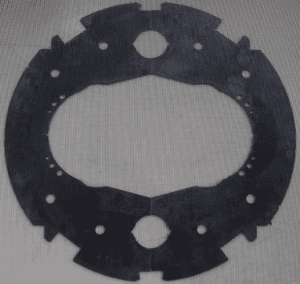
- Dipole magnet: Generates magnetic field to guide protons. Coils need to be superconductors, otherwise will have huge energy loses in heat. LHC has quadrupoles to protons collide inside instruments.
- Beam pipe: Inside these pipes, a proton makes 400 millions turns in a 27 km circumference in 10 hours. A distance equivalent to Solar System’s diameter. These pipes must have vacuum and meet each other in 4 experiments for collision.
In this game, you controls a proton which travels through LHC with joystick.

Experiments room

A photo of CMS (Compact Muon Solenoid), one of 4 LHC experiments.

Collision point in center can’t be directly measured. CMS was built in layers, each particle left a different signature in internal detectors. External layers (around the circle) are muon detectors, are the only particles which can pass through internal layer without being stopped. This is a CMS gas electron multiplier.

An Atlas muon drift tube.

The Atlas straw tube prototype with 300,000 small tubes has a gas mixture, with a wire inside and an electric field between wire and tube’s outer wall. Particles collide with gas atoms, knocking out electrons.
![]()
An Alice time projection chamber. Records trajectory of thousand of charged particles.

An Atlas calorimeter, it’s immersed in liquid argon.

CMS crystals.
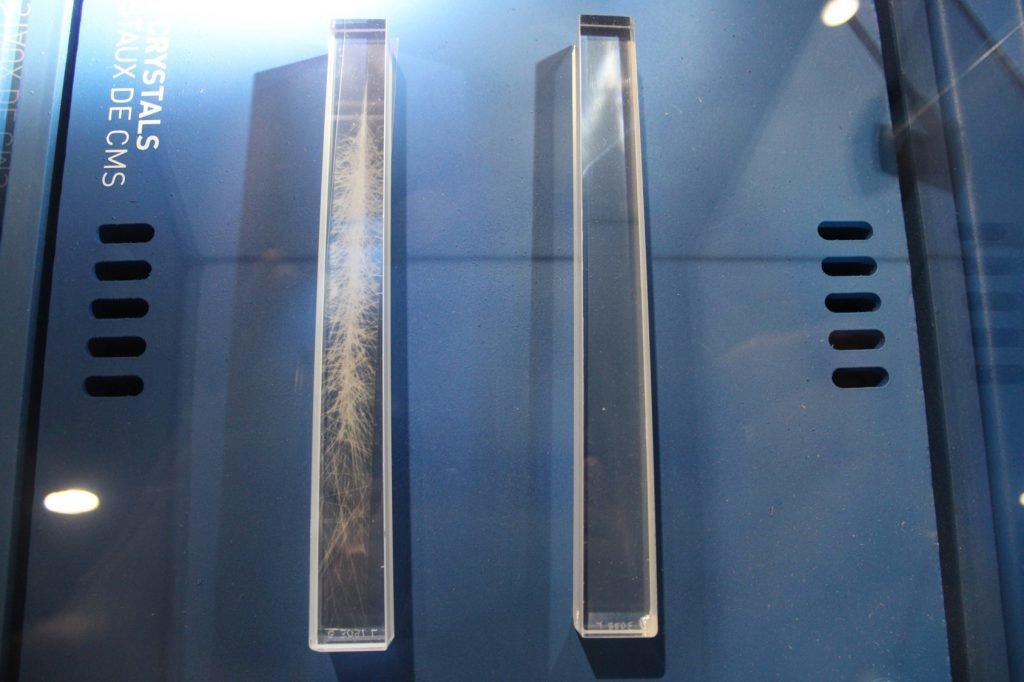
An Atlas solenoid magnet, it identifies if particles have positive or negative charge.

Silicon strip detector of Atlas. The sensors closest to collision are made of silicon.
![]()
The LHCb vertex locator. 42 modules surround collision point of LHCb.

All measures and registers of CERN accelerators and experiments need to be stored in a physical media. All the information were stored in tapes like these, each one has capacity for 1 Terabyte of data and 30 minutes of LHC collisions.

I purchased one of these tapes in souvenir shop.

About CERN guided tour
When I booked guided tour, I imagined visit parts of LHC. Instead, comes a CERN scientist to make a PowerPoint presentation and then guided tour to Microcosm. Don’t need guides to this permanent exhibition. In my opinion, guided tour was below expected. Don’t expect to enter in any LHC or any other accelerator installation when go to CERN.
At least, me and my group entered in a room and we saw the first CERN particle accelerator, the 600 MeV Synchrocyclotron (SC).
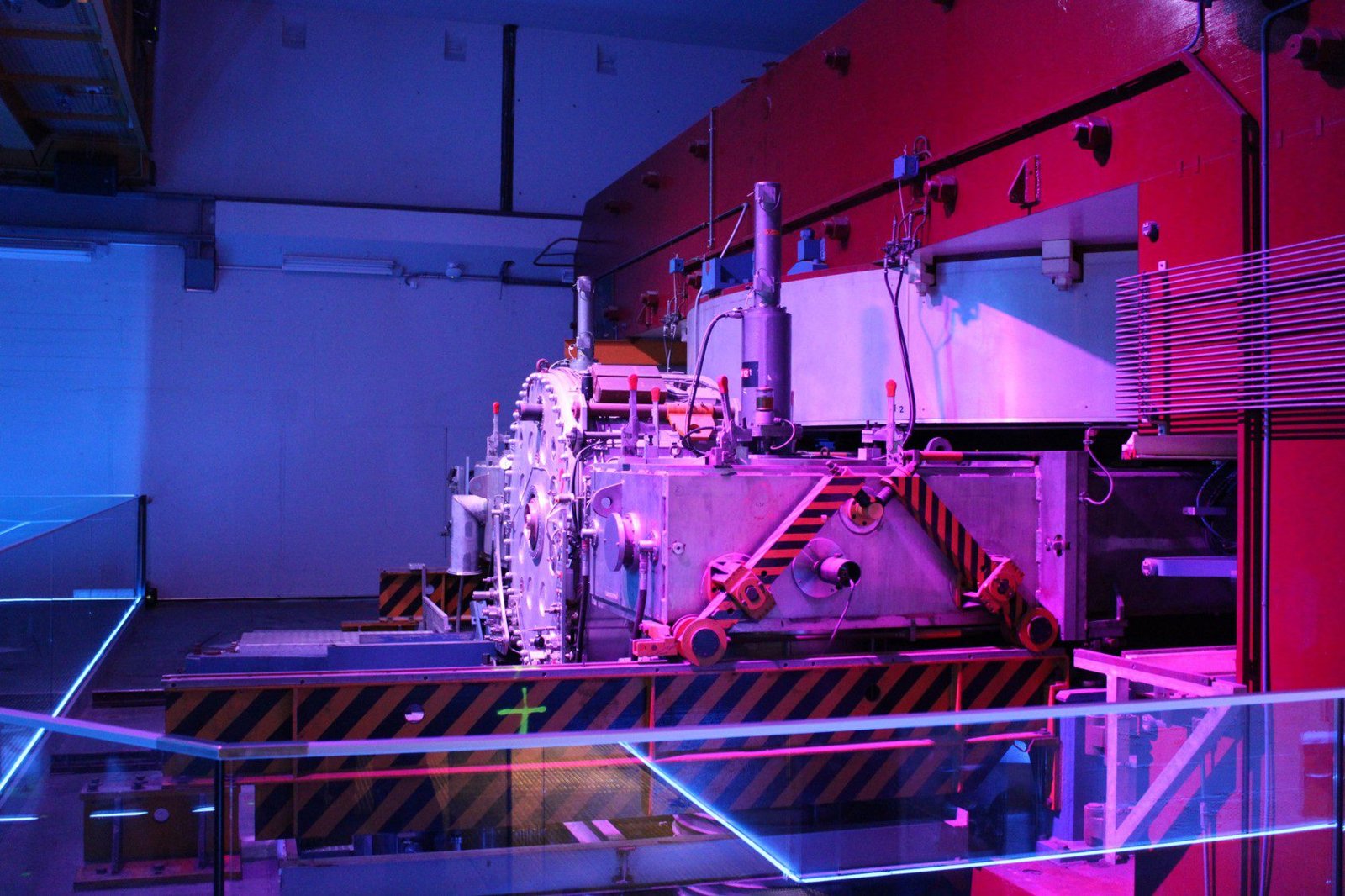
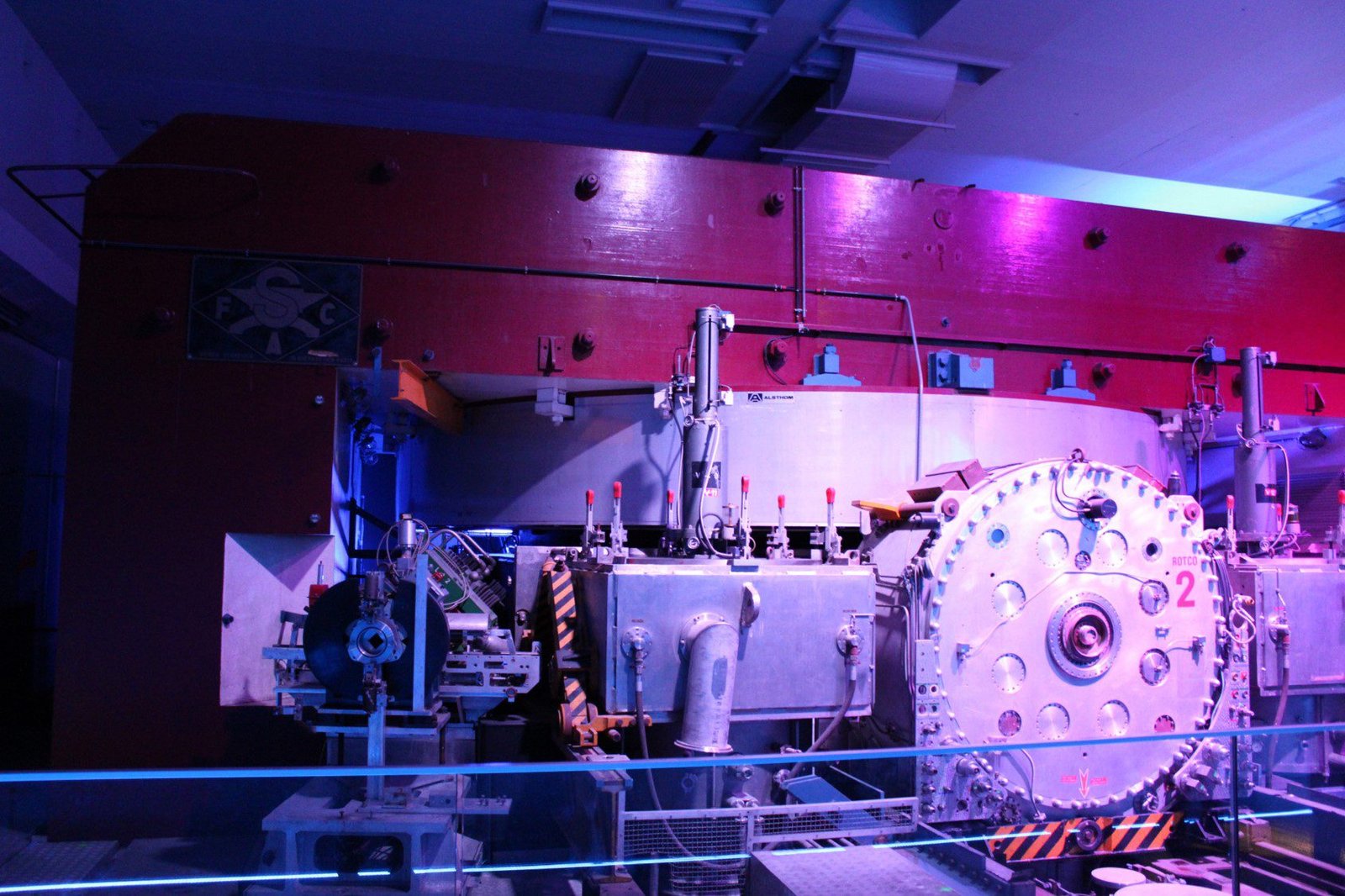
Synchrocyclotron was designed and built in only 3 years, starts operation in 1957. With this accelerator, European physicists were able to understand Weak Nuclear Force interactions. For 33 years, was important in fields of nuclear physics, solid state, materials and life science.



Additional content will be added at Gallery.